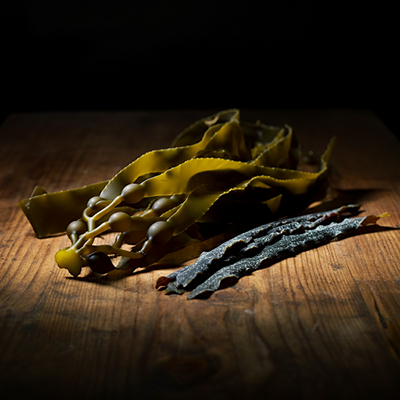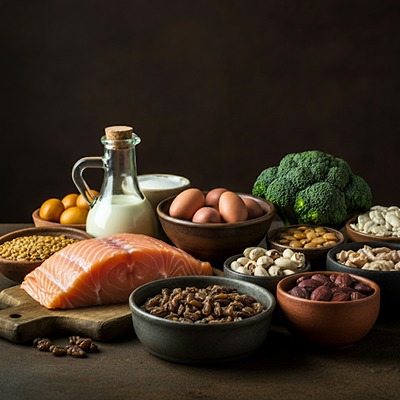Contents

Thyroxine, the hormone produced by the thyroid gland, is almost pure iodine (I). Thyroxine (T3 is the most active form) regulates very much of the total functions of the body, including metabolism, energy production, body weight, heat, etc. Plentiful amounts of this mineral in the diet can block absorption of radioactive iodine from fallout. It can also modulate the effect of estrogen on breast tissue.
Iodine Sources
- Nova Scotia dulse (seaweed)
- Norwegian kelp (seaweed)
California kelp is not a good nutritional source. Although Lugol’s solution is another source, and is only obtainable by prescriptions, it is easy to take too much. Other sources include:
- Garlic
- Leafy greens
- Pineapples
- Pears
- Artichokes
- Citrus fruits
- Egg yolks

Do not use fish liver oils as a source; for they damage the heart muscle. Bottled iodine can be painted on the bottom of the foot (or elsewhere on the body) and will be partially absorbed. But, of course, you might overdose. It is believable that, if the reddish color of the iodine on the painted area disappears within 24 hours, the body needed the trace mineral. One research study found that when cows were given 200 times the “normal” dosage of this mineral, they were in better health.
Two Forms
Iodine is the elemental form of iodide; and, in the body, it is most efficient in helping estrogen in breast tissue. Iodide is iodine compounded to sodium or potassium (potassium iodide is better than sodium iodide). In either form, it is absorbed well by the thyroid. However, organic sources of iodine (kelp, dulse, iodine caseinate, etc.) are absorbed by the body about as well as inorganic iodides (potassium iodide and sodium iodide). Iodide caseinate is especially effective in treating fibrocystic breast disease.
Deficiency Symptoms
- Goiter
- Thyroid gland enlargement or malfunction
- Cretinism
- Anemia
- Slowed pulse
- Fatigue
- Low blood pressure
- Obesity
- Thyroid cancer
- High blood cholesterol
- Heart disease
Iodine-Deficiency Disorders
- Goiter
- Cretinism
- Growth retardation
- Intellectual disability
- Neonatal hypothyroidism
- Increased early and late-pregnancy miscarriage
- Increased infant mortality
Needed for Assimilation
- Iron
- Manganese
- Phosphorus
Foods That Block Absorption
The following foods are known as goitrogens (goiter producers):
- Turnips
- Cabbage
- Mustard
- Soybeans
- Cassava root
- Peanuts
- Pine nuts
- Millet
Cooking often inactivates goitrogens.
Cautions
If you are going to sprinkle regular salt on your food, use iodized salt. However, you would maintain better health if you used as little added salt as possible. So-called “sea salt” is just regular sodium chloride, which was produced by ocean water evaporation; it contains no trace minerals, nor iodine. Excessive iodine (or iodide) intake will reduce thyroid absorption and may cause acne-like skin eruptions. When given at physiological dosages (150-600 mcg), iodine (or iodide) does not interact negatively with any nutrient or drug.
Dosage
150 mcg (which is 0.15 mg). It is crucial that you obtain enough of this mineral. Dulse and kelp (two types of seaweed) are the best sources. Too much iodine can actually inhibit synthesis by the thyroid gland; therefore, keep dietary or supplementary levels of iodine (also called iodide) intake below 500 mcg daily. This is a vitally needed element which far too many people do not obtain enough of. The body uses more of this than any other trace mineral.
HEALTH DISCLAIMER: The information on this website is for educational uses only and is not a substitute for professional medical advice. Always consult an authorized healthcare provider for any health concerns before using any herbal or natural remedy. We do not establish, treat, cure, or prevent any disease. Reliance on any material from this website is solely at your own risk. We are not responsible for any adverse effects resulting from the use of information or products mentioned on this website.
REFERENCES
Vance Ferrell, Harold M. Cherne, M.D. 2010. The Natural Remedies Encyclopedia. Altamont : Harvestime Books, 2010. pp. 113-114. Vol. Seventh.
